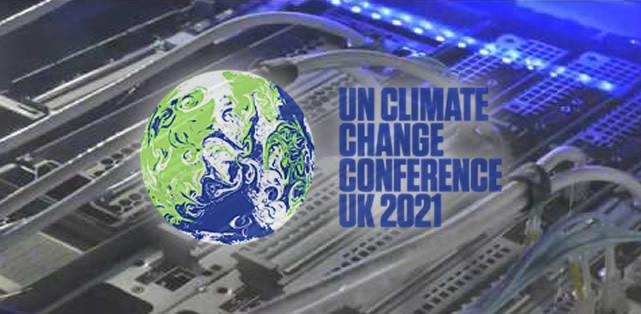Data storage should be a key focus area in COP26
The United Kingdom is hosting one of the largest climate change events, the Conference of Parties 26 (COP26). One issue that the thirty-thousand delegates and many other climate change issues followers around the world expect is a renewed commitment that the ambitious Nationally Determinant Commitment set by different countries around that world will be achieved. The United Nations Climate Change conference has been described as the last chance for the human race to address the effects of climate change. The event is so significant that participants should strive to reach a deal as well as state parties aiming at renewing their commitment towards the reduction of greenhouse gases.
Data centres and energy consumption
One critical area that should not be overlooked is IT and more so data storage. It is one of the main culprits as far as carbon emissions are concerned. The amount of energy needed to run the data storage infrastructure and the fact that demand has been rising at a phenomenal rate needs the states and industries to pay special attention. It is estimated that the need for data centres will double in the next few years.
This means that the amount of energy required to power these vital infrastructures will also rise. Given that a large proportion of power that fuels the data centres comes from fossils fuels, COP26 must come up with a formula on how the issue will be addressed. Walking out without a deal or an agreement on how countries will act to save the world from the grave effects of climate change will have condemned to oblivion the nations or regions that are already feeling the wrath.
COP26 should offer guidance
There is a general appreciation that countries need to meet their climate change commitments without halting their endeavour to achieve economic growth and development. Digital transformation is at the heart of every nation’s development endeavours. Given how damaging this transformation can be to the environment, COP26 must come with a clear guide on how to tackle the challenge it poses. Luckily, we will not be starting from scratch; considerable groundwork has been covered in building sustainable digital transformation, more so around data storage.
Adoption of technologies such as liquid immersion cooling, reliance on green energy to power the data centres, among other measures point in the right direction. What COP26 should do is to renew the commitment by state parties to ensure that all data centres are sustainable and the whole process of digital transformation is geared toward low carbon emissions. Developed nations also need to honour their pledges in availing financial assistance, especially to the vulnerable regions so that they can mitigate and adapt to the effects of climate change.
We have our last chance to get the runaway climate change in control; the world needs to speak in one voice, put up measures that will reduce greenhouse gases. Digital transformation threatens to reverse the gains which have been made over the years as increased demand will likely fuel the demand for energy most of which will be sourced from fossil fuels. Data centres being the largest consumers of this power can be built sustainably. Countries need to put targets with data centres being key focus areas; it is only through such efforts that the effects posed by climate change can be reduced.

